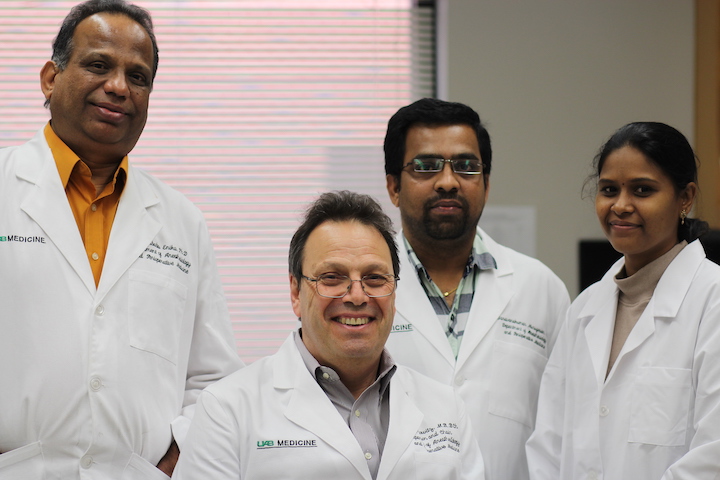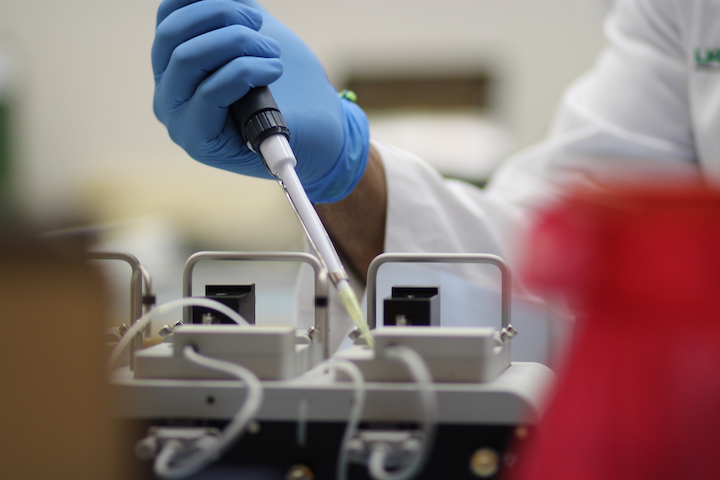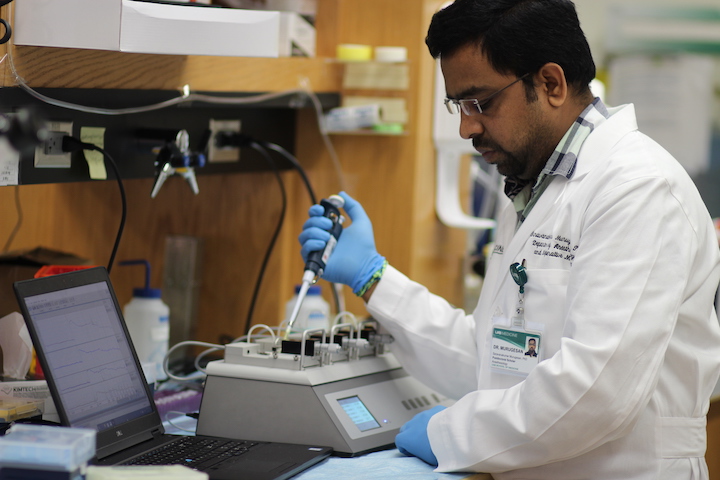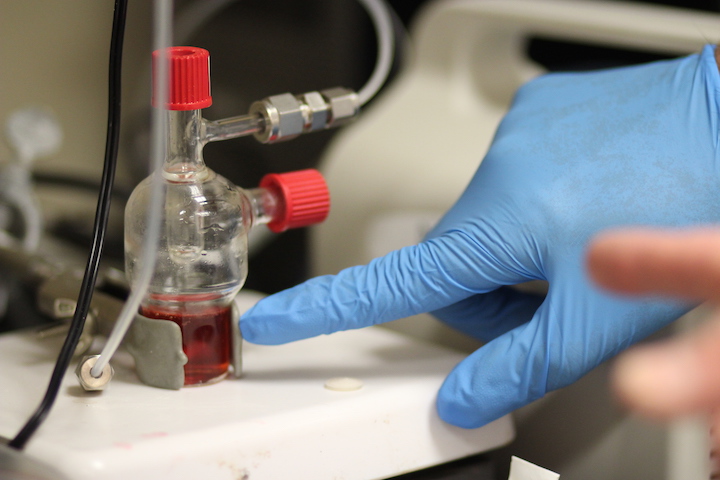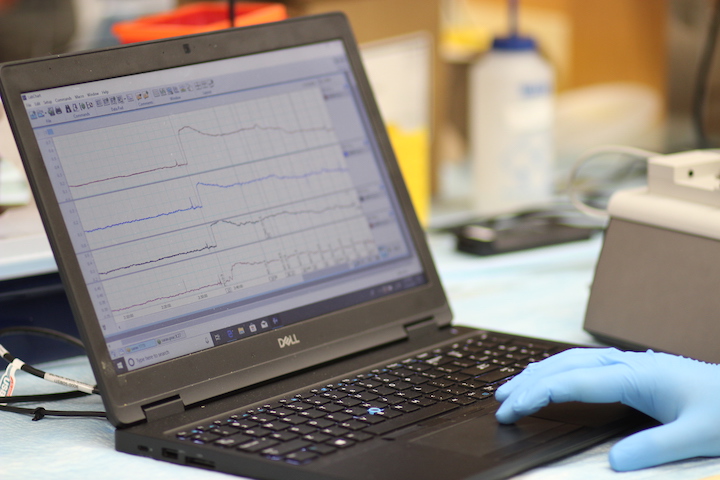Integrated Vascular Biology Laboratory
Members:
Dan Berkowitz, M.D., Alfred Habeeb Professor and Chair; Enika Nagababu, Ph.D., faculty member and scientist; and Sarav Murugesan, Ph.D., postdoctoral fellow.
The Berkowitz laboratory has been studying the mechanisms contributing to the pathobiology of vascular dysfunction in diseases such as age-related systolic hypertension, atherosclerosis, radiation-induced vascular injury, and pulmonary hypertension. Our integrated vascular biology laboratory has been continuously funded for 15 years by the NIH, as well as the American Heart Association and NASA through the National Space Biomedical Research Institute.
One of the focuses of the laboratory in the past has been the mechanism contributing to vascular stiffness in aging. We identified the upregulation arginase as an important mechanism for endothelial dysfunction in aging. Indeed, the upregulation of arginase leads to a significant decrease in the production of the vasoprotective gas nitric oxide through competition for the common substrate L-Arginine. Moreover, we have demonstrated that arginase upregulation contributes to the endothelial dysfunction associated with atherosclerosis.
We have also studied the role of cross-linking enzymes such as transglutaminase and Lysyl Oxidase like Enzyme 2 in the pathobiology of age-related vascular stiffness. We have shown that increases in cross-linking activity of these enzymes contribute to the stiffness and systolic hypertension associated with aging. Recently we have also studied the role of sensory G- protein coupled receptors that appear to mediate diverse functions in extrasensory sites. For example, we showed that the non-visual opsin, melanopsin or opsin 4, mediates vasodilation in both systemic and pulmonary vascular beds.
Currently the laboratory is focused on studying the molecular mechanisms contributing to pre-eclampsia, a condition characterized by systemic and pulmonary hypertension, endothelial dysfunction, and capillary leak in pregnancy. We have a host of equipment for measuring function in isolated vessels as well as integrated vascular function in vivo. We also have a host of instruments for biochemical assays and molecular techniques. Finally, we are in the process of developing a new technology that will allow for the delivery of inhaled nitric oxide inexpensively in a portable fashion, a technology that is in the patent process.
-
Recent Publications
For For a full list of publications prior to 2022, see PubMed.
- Akca O, Bartels K, Pittet JF, Berkowitz DE, Nemergut E 2nd. It Is Time to Advance Academic Anesthesia for Early Career Faculty. Anesth Analg. 2022 Oct 1;135(4):725-727. doi: 10.1213/ANE.0000000000006206. Epub 2022 Sep 15. PMID: 36108187.
- Melvin RL, Barker SJ, Kiani J, Berkowitz DE. Pro-Con Debate: Should Code Sharing Be Mandatory for Publication? Anesth Analg. 2022 Aug 1;135(2):241-245. doi: 10.1213/ANE.0000000000005848. Epub 2022 Jul 5. PMID: 35839495.
- Melvin RL, Broyles MG, Duggan EW, John S, Smith AD, Berkowitz DE. Artificial Intelligence in Perioperative Medicine: A Proposed Common Language With Applications to FDA-Approved Devices. Front Digit Health. 2022 Apr 25;4:872675. doi: 10.3389/fdgth.2022.872675. PMID: 35547090; PMCID: PMC9081677.
- Melvin RL, Abella JR, Patel R, Hagood JM, Berkowitz DE, Mladinov D. Intraoperative utilisation of high-resolution data for cerebral autoregulation: a feasibility study. Br J Anaesth. 2022 Mar;128(3):e217-e219. doi: 10.1016/j.bja.2021.10.035. Epub 2021 Dec 3. PMID: 34872719.
-
Active Grants and Other Support
